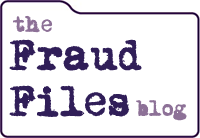
It turns out there were plenty of red flags pointing squarely at the scheme Madoff was running. It was clear years ago to Harry Markopolos, the author of “No One Would Listen: A True Financial Thriller.”Markopolos was the whistleblower who went to the Securities and Exchange Commission on several occasions with his suspicions about Bernie Madoff. But he wasn’t an investment expert who was “just jealous” of Madoff’s apparent success in generating high earnings for his clients quarter after quarter. He was a numbers wizard who had concrete proof the Madoff’s “investment strategy” couldn’t be anything like what he (or others) said it was.
Markopolos spent hours digging into Madoff’s activities, looking for any way he could to prove that Madoff wasn’t legitimate. But no one would listen to him.
It will be nearly impossible to know exactly how much money was lost via Madoff’s Ponzi scheme. Many investors will probably never come forward with their losses for a variety of reasons. About $65 billion is the figure that was showing on the collective investors’ statements at the time the fraud was shut down. However, this includes the phony “gains” that were showing; the actual cash put into the fraudulent investment scheme is more like $18 billion. This represents the true total loss from the Ponzi.
The first time Markopolos heard about Madoff’s investment scheme, he was suspicious because of the consistently high returns that were supposedly generated. Even the best money managers can’t beat the market so consistently and by so much as Madoff seemed to be doing. Markopolos also knew that Madoff was always on the hunt for new money from investors, even while he was pretending his fund was closed to new investors.
Madoff claimed that any offer for a new investor to enter his fund was a special privilege just for them, yet this offer was being made around the world, as Madoff was always looking for new money. This search for new money was an immediate tip-off, as Ponzi schemes continue to exist only if they can continuously bring in new money to pay off old investors who want to withdraw their funds.
The SEC couldn’t have had it any easier. Markopolos gave them a simple roadmap that outlined exactly why Madoff was lying about his investment strategy and the returns he was generating. He had no returns and no strategy, and Markopolos laid out the air-tight red flags time and again for the SEC:
Red Flag No. 1: Split-Strike Conversion
Madoff was supposedly using a strategy that involved purchasing baskets of stocks that were highly correlated to the general stock market. He claimed to know which stocks were going up because so much buying and selling went through his brokerage. Madoff then said he hedged those investments with OEX index options. This was impossible. Markopolos said the number of options Madoff would have to buy within this strategy would be enormous, and that such purchases would show up in the market. Plus, there were only $9 billion of OEX index put options on the Chicago Board Options Exchange, not enough to fulfill the $3 billion to $65 billion of options Madoff would need to protect his investments. There simply weren’t enough options out there for Madoff to use the strategy he claimed.
Red Flag No. 2: Market Timing
It was said that Madoff was only in the market for a few days or a few weeks at a time, doing this only six to eight times a year. When Madoff thought the market was going to fall, he supposedly put all of his client’s money into cash, and apparently had the most perfect ability to time the market. He was always in cash at the year end, when the auditors were going through his financial data. This is a preposterous explanation to anyone with an ounce of sense. How the SEC and finance professionals (yes, those who were bringing him billions of dollars to “invest’) could hear this and not run the other way as fast as their legs could take them is beyond me. Markopolos gets another point in the game of who has more common sense.
Red Flag No. 3: Giving Up Profits
The strategy Madoff claimed to be using cost him big profits. His business with the feeder funds only paid him with commissions on trades. This means the feeder funds, who were essentially doing no work, were making more money than Madoff, who was supposedly doing all the heavy lifting. If Madoff had just run his business as a hedge fund, he could have charged a 1 percent management fee plus 20 percent of any profits he generated. Madoff would have earned about 4 percent on the assets he was supposedly investing each year. It is clear now that Madoff didn’t do a hedge fund because he wasn’t actually investing the money. He needed to give the feeder funds an incentive to bring him the new money his Ponzi desperately needed to stay afloat.
Red Flag No. 4: Cheaper to borrow
Doing business the Madoff way was expensive. He returned about 12 percent a year to investors, and this percentage was his cost of doing business. Madoff could have borrowed money at a much cheaper rate, and then done any trading and investing that he chose and could have kept all the profits for himself. This red flag is so obvious that it’s hard to believe Markopolos is the only person who figured it out.
Red Flag No. 5: Secrecy
Every long-term fraud scheme lives and dies by the secrecy of those who participate. If too many people start talking, you risk having the scheme questioned. Madoff demanded secrecy from everyone who gave him their money. He threatened to kick them out of his fund and make them take their money back if they talked too much about investing with him. Anyone running a legitimately successful business doesn’t have a code of silence. They might not be seeking publicity, but they certainly aren’t going to forbid their clients to talk about how successful they are. When an investor is prohibited from talking about the investment, any reasonable person should know something is amiss.
Red Flag No. 6: The Performance Line was a 45-degree angle
Legitimate investment returns plotted on a graph have one consistent theme: They go up and down. Yet Madoff’s returns showed a lovely 45-degree incline. This doesn’t happen in the real world. Investing is a game, and there are winners and losers. Even the winners lose some of the time. It’s impossible to generate returns that plot out at a nice 45-degree angle. Markopolos easily saw this, but the money guys and the SEC were oblivious to it.
Markopolos made spotting this fraud look easy. The truth is that he and his team spent countless hours investigating Madoff’s Ponzi scheme and looking for ways that it could be legitimate. But in the end, the red flags were so blatant that it is mind-boggling to think that the SEC didn’t take Markopolos seriously. They didn’t even spend any time analyzing his reports to see if he knew what he was talking about. And those investing with Madoff were just as guilty of blind belief in him. Even the most simplistic red flag — the consistently high returns — should have tipped off anyone who spent more than a few minutes looking at Bernie Madoff’s activities. If it sounds too good to be true, it almost always is.
Tracy L. Coenen CPA, CFF is president of Sequence Inc, a forensic accounting firm with offices in Milwaukee and Chicago. She is also the author of the books Expert Fraud Investigation and Essentials of Corporate Fraud, and can be reached at 414.727.236 [email protected].





[…] via Red Flags Pointed Directly to Madoff — Sequence Inc. Fraud Files Blog […]
[…] fraud scheme lives and dies by the secrecy of those who participate,” forensic accountant Tracy Coenen says. “Anyone running a legitimately successful business doesn’t have a code of silence. They […]
[…] fraud scheme lives and dies by the secrecy of those who participate,” forensic accountant Tracy Coenen says. “Anyone running a legitimately successful business doesn’t have a code of silence. They […]